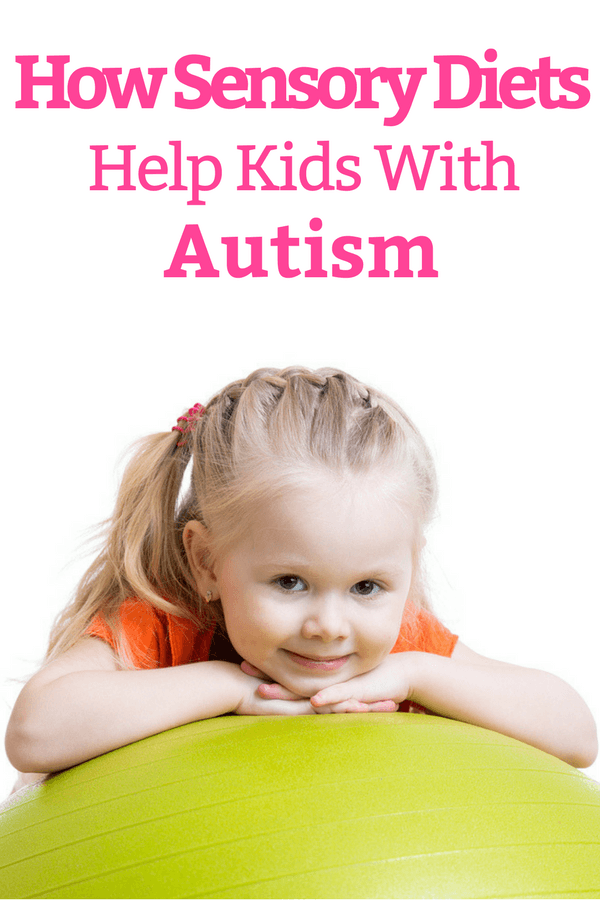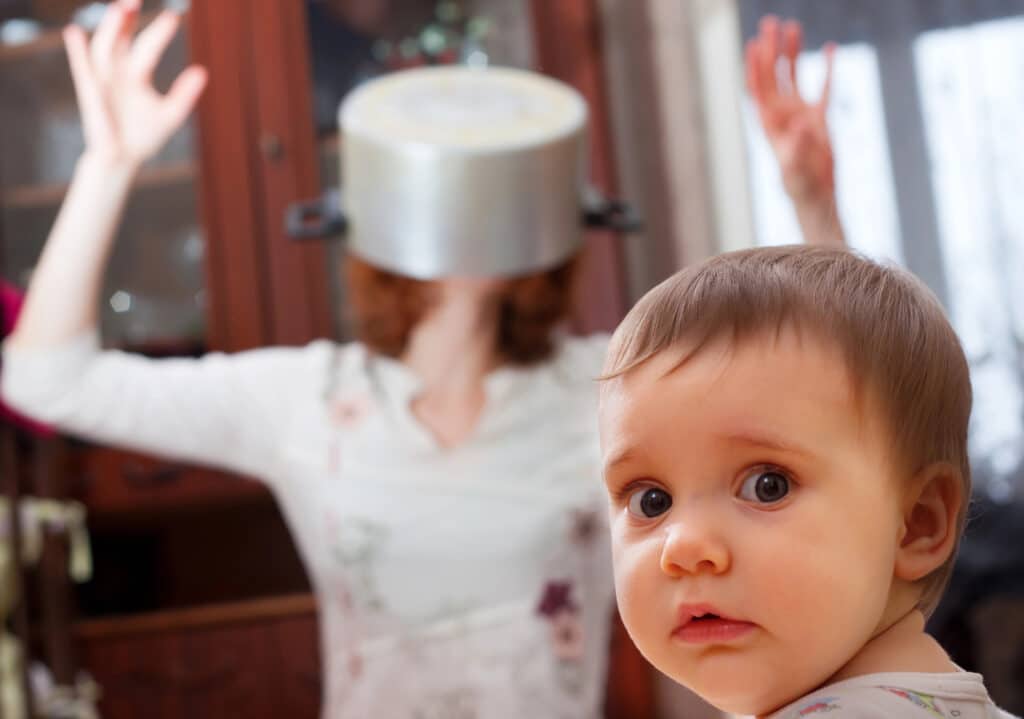If you’ve been searching for sensory diet activities to help your child with autism with behavior, meltdowns, or focus, then chances are you’ve read all about sensory processing disorder.
Guess who didn’t? Me!
Nobody mentioned Sensory Processing Disorder to me when my son was diagnosed with autism five years ago.
Not one pediatrician or teacher reached out to say Hey; You know what may be causing all of your son’s behaviors?
Sensory Processing Disorder!
But when I learned about SPD and the sensory diet activities that help kids, it was an answer to a prayer.

Here’s the thing nobody tells you: Every child with sensory processing disorder may not have autism, but 90% of children with autism have sensory processing disorder.
Ha, it’s more like 100%. (According to my ST friend & fellow autism mom Amy.)
Sounds kind of startling, but once you learn more about it, things start making sense.
Sensory processing disorder or SPD causes children difficulties processing information from the five senses: sight, hearing, taste, smell, touch, plus two others you may not be familiar with: vestibular (movement) and proprioception (sense of position).
Here’s why this is important: If your child is having difficulties in one or more of these areas, it can explain his behavior.
When we understand the why, we can begin to narrow down the tools and strategies to help our children receive, process, and respond to sensory information appropriately.
These tools & strategies become our child’s Sensory Diet.
What is a Sensory Diet?
Spoiler alert: Sensory diets are not about food.
A sensory diet is a set of activities developed by an Occupational Therapist (not a mom blogger) to address a child’s unique set of sensory needs. Because every child is different, no two sensory diets look the same.
One child may need a sensory diet to restore calm due to an overstimulated nervous system. In contrast, another may need more arousing sensory diet activities to wake him up out of an inactive state. What I find super interesting is that the same sensory diet activity can do both jobs.
Sensory Diet Benefits
Sensory diets have many positive benefits that are both immediate and long-lasting. Meaning you can start today and see results.
A proper sensory diet can help your child tolerate situations and sensations that once seemed impossible to manage.
Have a sensory seeker or a child that avoids situations altogether due to sensory stimuli?
A sensory diet can help.
Sensory diets help children with autism and SPD deal with their emotions, improve self-regulation, and increase focus.
Does Your Child Need a Sensory Diet?
Only a qualified, trained Occupational Therapist will be able to answer this question with 100% authority.
It takes a trained eye to spot Sensory Processing Disorder and a real pro to develop a sensory diet.
But, I understand you may be curious right now about your child’s behaviors (and what you can do.)
So, I’m sharing a few questions used by professionals to assess sensory processing disorders from Dunn’s Sensory Profile (1999).
Is your child particularly sensitive to touch?
Does your child enjoy fast-moving or spinning activities?
Does your child have unusual sensitivities to smell?
Does your child avoid physical games involving jumping?
Do you feel your child tends to be restless or “fidgety?”
Additionally, does your child have sensitivities such as:
Aversion to grooming activities
Sensitive to lights
Annoyed by clothing materials tags or labels
Picky Eater
Appears clumsy
Hyperactive
Spins and rocks
Chews on clothing and hands
Fine motor delays
A sensory diet of activities focusing on your child’s specific needs can bring immediate and long-lasting results. Even better, these activities can be implemented in a professional environment as well as at home and in school.
Sensory diet activities are categorized as follows.
Sensory Diet Activities
Proprioceptive
Often called the sixth sense, proprioception tells us our body’s location in space.
Proprioception is essential for body awareness and how securely we feel in our surroundings.
A child with proprioceptive difficulties may do one or a combination of the following:
- Crash into – jump upon – or climb onto furniture
- Watch his feet as he runs
- Chew on objects and clothing
- Enjoy hiding in tight or small spaces and roll in blankets
- Use too much force when writing
- Have trouble isolating body movements
Proprioceptive Sensory Diet Activities
Jumping: Trampoline, Jump Rope, Crash Pad, Hopper Ball, Jumping Jacks
Climbing: Monkey Bars, Jungle Gym, Rock Walls
Heavy Work: Playing Catch with Therapy Balls or Water Balloons, Pushing a vacuum, Carrying Laundry Basket
Oral Proprioceptive: Drinking Milkshakes from Straws, Blowing Bubbles, Blowing Pinwheels, Crunchy Snacks, Chewable Jewelry
Deep Pressure: Weighted Blankets, Weighted Lap Pads, Weighted Worm
Vestibular
Our vestibular system is responsible for balance and movement.
A few signs of vestibular processing issues are:
- Frequent falling or clumsiness
- Hesitant and cautious behavior
- Impulsive running jumping or climbing
- Regular or no motion sickness-even after excessive spinning
- Difficulties staying focused without movement
- Stiff or slack necked posture
- Preference for sedentary or extremely high energy activities
Vestibular Sensory Diet Activities
Swinging: Back & Forth on Playground Swing, Side to Side Swinging, Rocking Horse, Indoor Therapy Swing, Hammocks
Spinning: Sit & Spin, Dizzy Disc Jr, Tire Swings
Upside Down: Hanging Upside Down on Monkey Bars, Cartwheels, Headstands, Roller Coasters (Older Kids)
Balance: Obstacle Course, Gonge Riverstones, Gonge Hilltops, Balance Beams
Tactile
Ordinarily, a hug or touch from someone you love provides a sense of comfort and calmness, but for someone with tactile processing difficulties, it is the opposite.
Children with tactile sensory processing disorder prefer not to be touched. Now when we think of physical input, we usually think of the skin on our body.
Tactile refers to the skin inside our mouth too!
Your picky eater may have a tactile sensory processing issue.
Other signs of possible tactile processing issues may include:
- A preference to walk on toes or barefooted
- An extraordinarily high (or low) pain threshold
- Strong objections to activities like nail cutting, hair combing, brushing teeth
- Decreased awareness of hot or cold temperatures
- Preference for tight clothing
- An inclination to play alone
Tactile Sensory Diet Activities
Theraputty or Play-Doh
Finger Paints
Shaving Cream
Water Play: Bathtub, Sink, or Swimming Pool
Cooking! Getting your child involved in the kitchen may help
Auditory
Auditory processing is about what we do with what we hear.
If your child has an auditory processing disorder:
- He may have trouble understanding speech in noisy environments
- Perform better on assignments that do not require listening
Be easily startled, distracted, or worried by loud noises - You may notice his behavior improve in quiet settings
Auditory Sensory Diet Activities
Outside Listening Exercises (Listen & Identify Sounds in Nature)
Humming
Playing a Musical Instrument
Therapeutic Listening Programs
Visual
Vision is essential for obvious reasons, but for today’s purposes, let’s consider how sight processing issues could be impacting your child.
Signs of possible difficulties with visual processing or ocular motor control are:
- Sensitivity to light
- Trouble making or keeping eye contact
- Severe fear of the dark
- Difficulty locating objects
- Frequent missteps or what looks like clumsiness
- Poor handwriting
- May have a hard time with visual activities like puzzles and matching games.
Visual Sensory Diet Activities
T-Ball or Catch
Word Searches & Puzzles such as I-Spy & Where’s Waldo
Looking at Bubble Lamps & Lava Lamps
Looking at Books with Pictures
Dim or Slow Changing Lights
Olfactory
Your sense of smell is a powerful tool. Think about it! The olfactory system is linked to your sense of taste and can conjure memories of long ago.
This is why you can’t smell CK One without thinking of that jerk from Junior High.
Which is annoying, but for kids with an olfactory sensory issue, smell can be a constant source of anxiety.
Some red flags to look for are:
- An intense reaction to aromas you may not notice
- (Does your child smell food before taking a bite?)
- Strong aversions to scented lotions, perfumes, or meals
- Overall like or dislike of a person based on smell alone
Here’s a VIP piece of the puzzle-if your child has an olfactory issue & he doesn’t like the perfume or scented soap/lotion his teacher or therapist wears-schools out. As in, it was over before it started. You may want to send a note to school:))
Olfactory Sensory Diet Activities
Guess The Scent Games: Soak Cotten Balls with scented essential oils, use scented candles, scratch & sniff stickers, food, drink, or scented slime, and do a “blind scent test.”
Strive to desensitize smells in small increments: Start small and always respect your child’s boundaries.
Ask teachers & other caregivers to use unscented lotions, shampoos, and refrain from using perfume or cologne. If your child is sensitive to the smell of any of these products, his therapist could be the best of the best, and it wouldn’t matter. The session was a failure the minute he smelled her!
Getting Help for Autism & Sensory Processing Disorder
I know how overwhelming it is when you are seeking help for your child after receiving a diagnosis for autism or sensory processing disorder.
Autism and sensory processing disorder are not the easiest to understand. You don’t have to learn everything in one day.
Do not even try.
When my son was diagnosed with autism, I had never heard of sensory processing disorder. No one mentioned a sensory diet.
Moment of Truth: The first time I heard of a Sensory Diet, I thought it referred to a Gluten Free /Caisen Free diet.
I guess that’s why I just wrote this mini book for you.
So you’d have the information I didn’t.
Finding An Occupational Therapist
If you think your child has SPD go ahead and start trying to find an OT now! Preferably one with experience with Sensory Processing Disorder.
If your child is under 3, contact your state’s Early Intervention Program. Services are typically free.
If your child is over the age of 3, contact your local school district and request an evaluation by an Occupational Therapist with expertise in sensory processing issues.
Services can be written into your child’s Individualized Education Plan or (IEP). You may want to read this before the meeting if you’re a newbie.
AND…you can always go the private route.
That’s what we are doing in addition to what our school district offers.
Ask around about Occupational Therapists with sensory integration knowledge.
Word of mouth is usually the best way to find the right therapist.
If that doesn’t work out for you, check the STAR Institute’s resource directory or Find An Occupational Therapist.
Books About Sensory Processing Disorder & Autism To Read
Read Raising A Sensory Smart Child and Ten Things Every Child with Autism Wishes You Knew (This one is available on audio, so you can listen!)
Both books are easy reads and shed SO much light on the behaviors of autistic and sensory challenged children!
Ok! I’m going to wrap this up now, I promise!
Sensory Diets work.
It may be hard to believe that jumping on a trampoline or carrying a bag of groceries can help your child focus and calm down, but it does.
A good occupational therapist can put together a daily routine of sensory activities to fit into your child’s schedule at home and school.
Did I Miss Anything?
Do you have enough information to decide if a sensory diet is right for your child?
Or are you still on the fence?
Either way, please let me know by leaving a comment below!
More Autism Tips You Need To Read!
15 Autism Parenting Tips Every Mom Needs To Know
40 Sensory Play Activities For Kids With Autism
50 Things You Need To Help Your Child Through An Autism Meltdown
26 (Funny) Signs You May Be An Autism Mom
8 Reasons AngelSense Is The Best GPS Tracker For Autism (The Sensory Friendly Tracking Device We Trust)
65 Brilliant Autism Toy Ideas
What’s The Difference Between An Autism Meltdown & A Tantrum?
If you enjoyed this collection of sensory diet activities, please share it!












